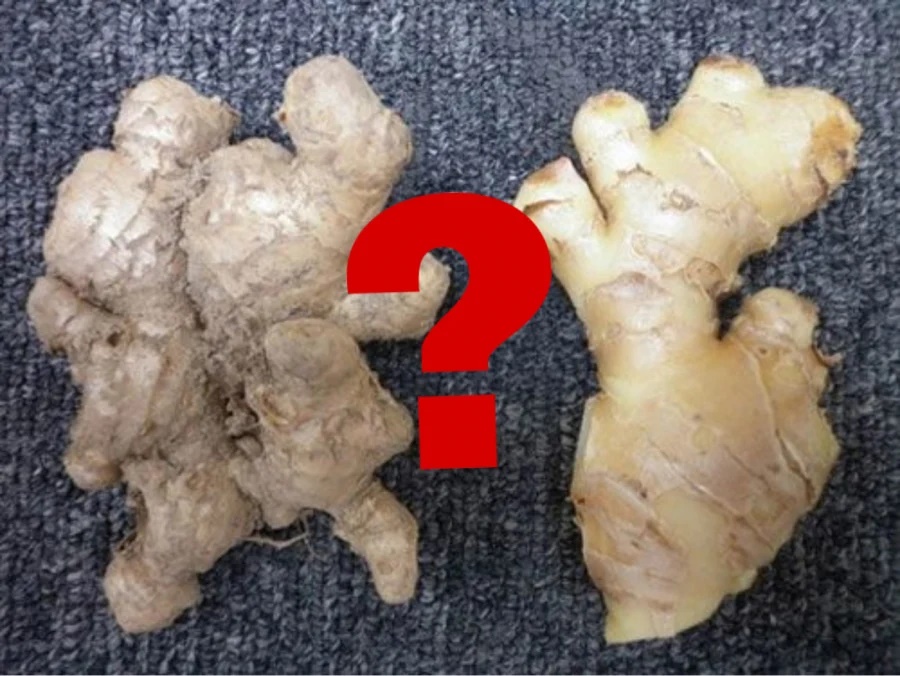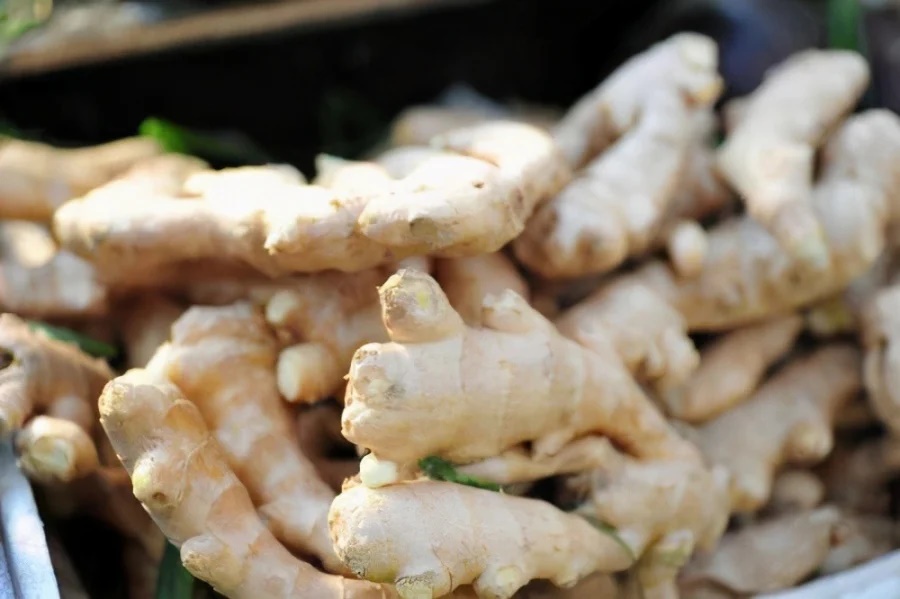
Choose by the color of ginger
In general, the surface of ginger would not be smooth and shiny but rather rough and not very polished. By lightly scraping a piece of ginger with your finger, you can see a relatively clear difference in color between the ginger skin and the ginger flesh, indicating that the quality of this ginger is relatively good.
If the skin of the ginger is smooth and yellow, and when lightly scraped, the core inside also has a similar color, it means that this ginger is less spicy and less fragrant.
Choose by the taste of ginger
Fresh ginger will have a characteristic spicy and strong aroma of ginger. However, if you scrape the skin and only smell a faint scent, and it is not very spicy, it indicates that this ginger is not good. Avoid buying ginger with strange smells as it may be rotten.
Do not buy ginger that has sprouted
Similar to garlic, ginger that has sprouted will have a worse taste and lower quality than fresh ginger. Sprouted ginger usually shrinks and loses water, and it doesn’t taste good. Therefore, when buying ginger, avoid buying ginger that has sprouted.
In addition, choose ginger that looks firm, with no wrinkled skin, and when you bend it, it feels fresh and even releases a bit of water.
Choose by size
There are many types of ginger that look very large, with clean, shiny, and smooth skin. This type of ginger is usually less spicy and less fragrant. On the other hand, there are small-sized ginger with slightly rough skin, firm to the touch, fragrant and spicy. Therefore, it is advisable to choose small ginger, avoid being tempted by large ginger.
Preservation method using salt
Spread a piece of food wrap on a flat surface, place a kitchen paper towel on it, and then place the ginger on top. Sprinkle salt evenly over the ginger. Pour a little cooking oil on top, then wrap it with food wrap, smoothing out the excess. Store it in the refrigerator or in a cool place. You can take it out whenever you want to use it.
The principle behind this is that salt can absorb moisture and has a great drying effect. Of course, this method is suitable for small pieces of ginger. If you have a lot of ginger, you can let it dry in a cool place to remove the water, sprinkle salt on a piece of newspaper, wrap it with paper, and store it in the refrigerator or in a well-ventilated place.

Preservation method using sand
If you have sand at home, you can put the ginger in it, making sure to spread a thin layer of ginger and cover it with a layer of sand. If you live in an apartment building, you can use a flower pot and add sand to it, bury the ginger in the sand.
When you want to eat ginger again, you can dig out a small amount, because sand has good heat insulation properties, making it difficult for the water inside the ginger to evaporate, so it can be preserved for a long time without mold or spoilage, ensuring the freshness of the ginger.
Preservation method using dried tea leaves
If you frequently drink tea, you may have dried tea leaves at home. Take advantage of the dried tea leaves to preserve the ginger.
Find a piece of paper towel to wrap the tea beforehand, then find a nylon bag, put the ginger and the tea-wrapped paper in the bag, squeeze out the air inside the bag, and tie it tightly.
Then store the ginger in the refrigerator or in a cool place for preservation. As tea can effectively absorb water and keep it dry, it is beneficial for long-term preservation of ginger and is also suitable for preserving large pieces of ginger.
Preservation method using rice
The method of preserving with rice is also very simple, just put the ginger in rice. This method is similar to the method of preserving with sand. It is precisely because rice is a good moisture absorber and has an adsorption effect that it can create a sealed and dry environment for ginger. At the same time, it can isolate it from the external air and reduce the oxidation process of the ginger, thereby inhibiting the sprouting of ginger. Note that, before preservation, clean the ginger first so that the rice does not get dirty or discolored, and it can still be eaten.
According to Xe và thể thao






































